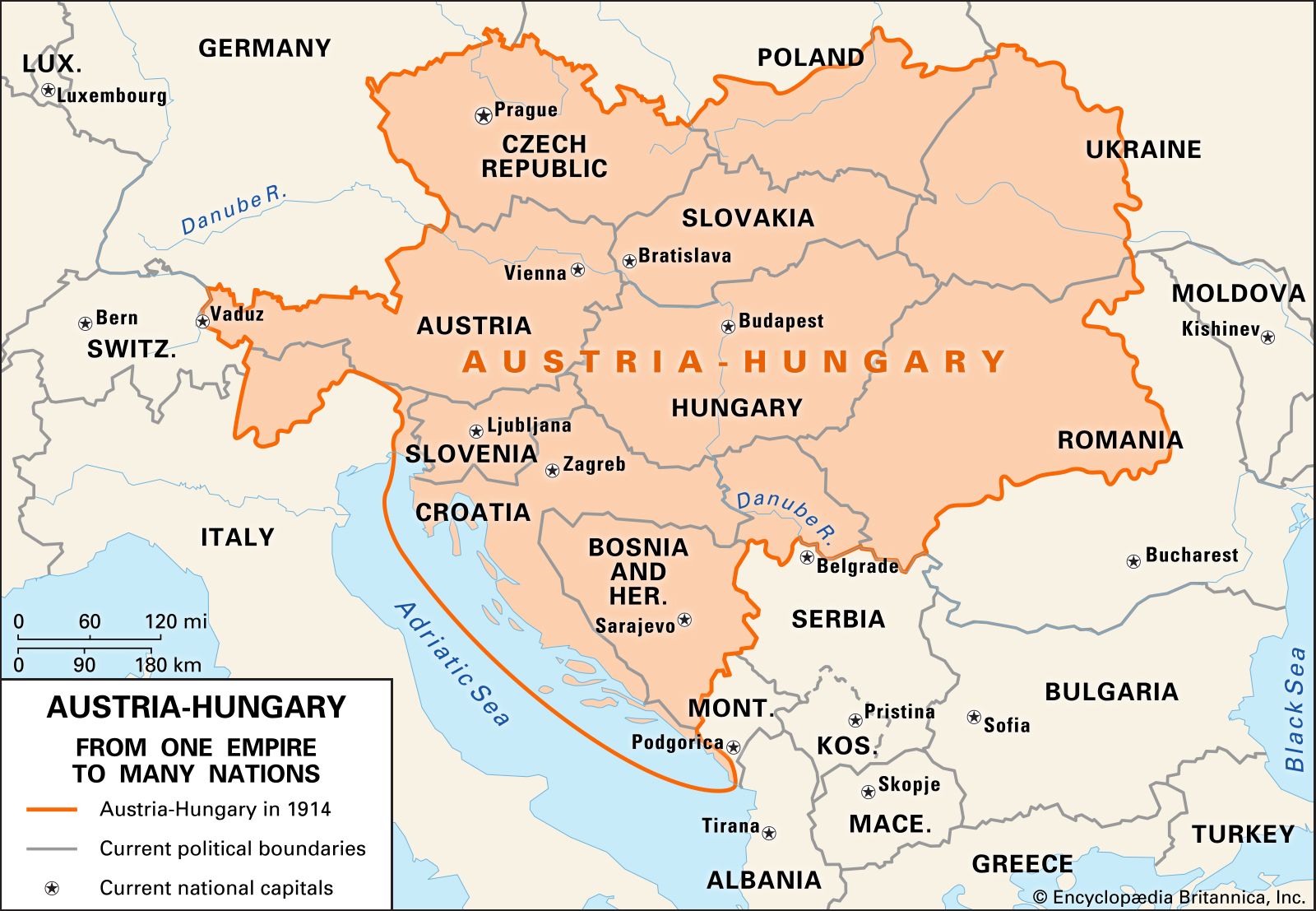The Austria that was left at the end of World War I had a population of about 8 million, about 2 million of whom lived in Vienna. Long the market for an enormous hinterland and the supplier of industrial finished goods to the agricultural provinces, Vienna was now cut off from its former territories by political boundaries and tariff walls.
Between 1922 and 1925 Austrian finances were under direct League of Nations supervision. But one possible road to economic salvation—union of Austria with Germany—though voted by the assembly of the new Austrian republic in March 1919, was forbidden on political grounds by the Allies.
These two problems, economic survival and union with Germany, were complicated by the continuation of the political struggle between Social Democrats and Christian Socialists. The Social Democrats were a moderate Marxist party with strong urban support. The Christian Socialists were a conservative clerical party with a mass following in the countryside and among the urban lower middle classes and counted many priests among their leaders.
In the mid-twenties the two hostile parties organized private armies: the Christian Socialists, the Heimwehr (Home Guard), and the Social Democrats, the Schutzbund (Defense League). The Social Democrats governed Vienna, introducing measures for relief and for workers’ housing, paid for by taxes on the rich. After 1930 Mussolini supported the Christian Socialists, who grew more fascistic in their outlook.
The failure of Briining’s plan for a customs union with Germany and the related collapse of the Vienna Kredit-Anstalt bank increased tensions, and in September 1931 the Heimwehr tried its first coup, which failed. Efforts in 1932 to organize a Danubian economic cooperation scheme were rendered futile by Italian and German opposition. After Hitler came to power in early 1933, many Christian Socialists openly became Nazis.
The Christian Socialist chancellor, Engelbert Dollfuss (1892-1934), however, strove to curb the Nazis. To this end he suspended parliamentary government in March 1933. He forbade the wearing of uniforms by political groups and tried to expel Nazi agitators. In retaliation, Hitler made it prohibitively expensive for German tourists to visit Austria. In the face of Nazi-inspired disorder, Dollfuss banned the Nazi party.
But he also attacked the Social Democrats, banning all parties except his own Fatherland Front, a union of all right-wing groups except the Nazis. A raid on Social Democratic headquarters precipitated a workers’ riot. The government then bombarded the workers’ new apartment houses in which the Social Democratic leaders had taken refuge breaking the Social Democratic party but alienating the workers and uniting them in opposition to the regime. Dollfuss had to depend on Italy to support him against the threat from Hitler.
Dollfuss’s successor, Kurt von Schuschnigg (1897– 1981), was committed to the same policies. But Mussolini now needed Hitler’s support for Italian aggression in the Mediterranean. Schuschnigg tried to concentrate armed power in his own hands rather than those of the Heimwehr, and strove to come to an understanding with France and its allies to replace the tie with Italy. But he failed.
To stave off violence he had to make concessions to Artur Seyss-Inquart (1892-1946), leader of the Austrian Nazis, and then humble himself by visiting Hitler at his Bavarian mountain retreat at Berchtesgaden. Hitler threatened full-scale invasion, and Schuschnigg agreed to bring the Nazi party into the Fatherland Front and to pursue the foreign policy goals dictated by Hitler. He also agreed to make Seyss-Inquart minister of the interior, the ideal position from which to direct a coup.
When Schuschnigg returned to Vienna, he realized that he had surrendered Austria, and he called for a sudden plebiscite, desperately hoping to win working class support. This forced Hitler’s hand. On March 2 he invaded Austria, even against the advice of SeyssInquart, and proclaimed his native land a province of Germany. In April a plebiscite on Austrian union with Germany—called Anschluss—resulted in a 99.75 percent yes vote.

